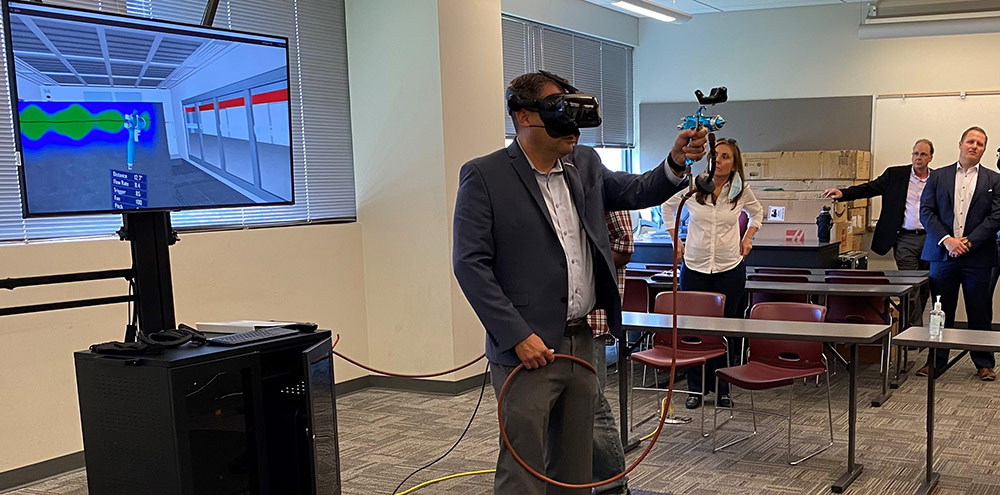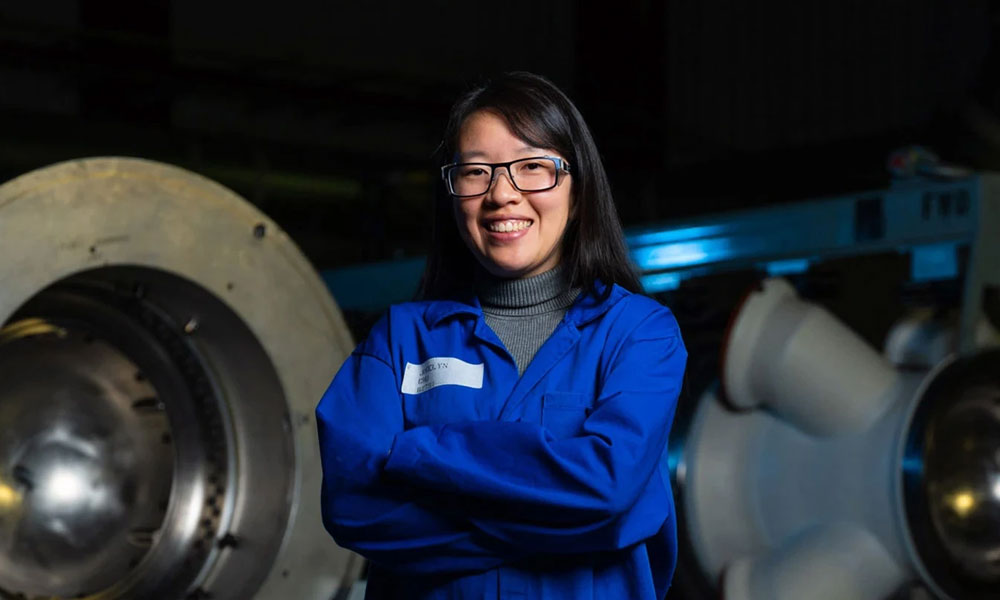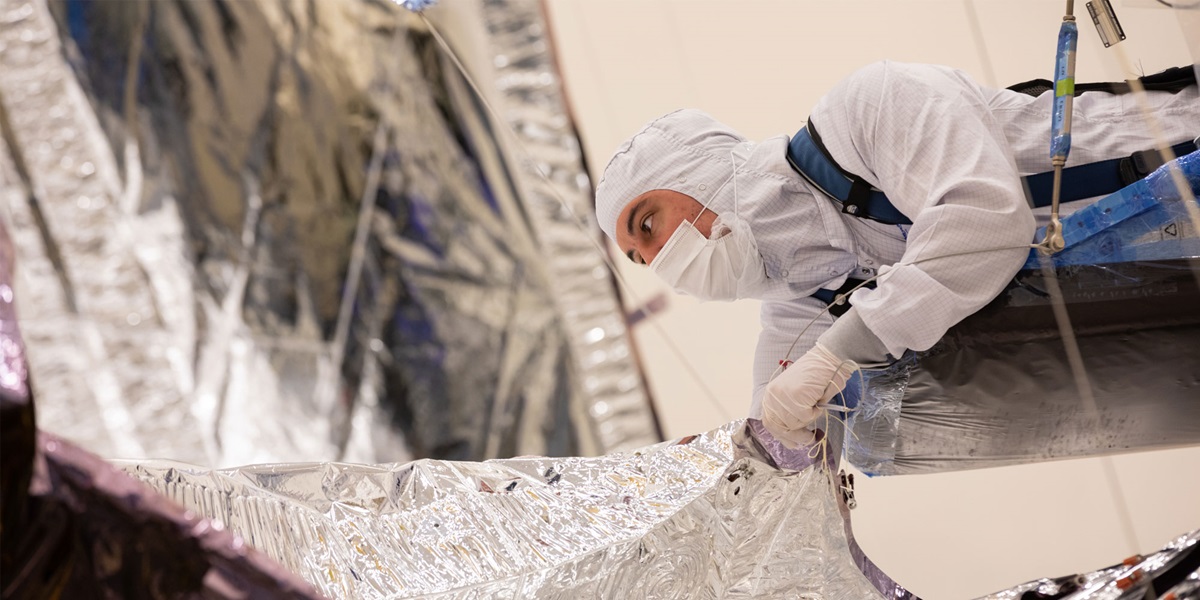Growing up in Palmdale, California, near Edwards Air Force Base, Clayton R. was used to seeing all manner of aircraft soar over his hometown.
“It was so cool to watch them fly and wonder what it would be like to actually work on them,” he said.

So when he had the opportunity to apply for new aerospace certification program sponsored by Northrop Grumman at College of the Canyons in nearby Santa Clarita, he didn’t hesitate. Less than a year later, he is one of 13 members of the program’s first graduating class, and now works with four of his classmates as low observable (stealth) aircraft mechanics in Palmdale.
Low observable technology covers a range of methods and materials used to make anything from aircraft and satellites to ships and ground vehicles less visible to radar and other detection methods. It’s an area of expertise that’s in high demand, and Northrop Grumman traditionally hired low observable (stealth) specialists after they left the military. But that candidate pool has dwindled.
“The military has ramped up its retention efforts for this skillset, so we decided to create our own training program,” said Edwin A., the workforce development and program staffing manager for the Strike team.
Enter America’s Job Center of California (AJCC), which connects employers with specialized job openings to qualified job seekers, and College of the Canyons, which was interested in hosting the program.
Northrop Grumman created the 13-week, 130-hour course, as well as the criteria to be eligible for the course. Working on low observable (stealth) projects requires a security clearance, so anyone interested in applying for the course had to be vetted first to ensure they could obtain and maintain a clearance.
College of the Canyons didn’t need much marketing for the pilot program, as word of mouth resulted in over 800 page views when the first information session was scheduled last year. About 150 potential candidates attended the virtual session, 50 began the vetting process and 13 cleared all hurdles and are eligible when the program kicked off in August 2021.
Almost all sessions of the course were virtual, covering everything from basic aircraft safety to fundamentals of low observable technology to process and quality improvement.

The high point of the course, though, was using virtual sprayer technology to learn about and practice coating application and removal.
“We use a virtual painter so there are no HAZMAT or OSHA requirement to facilitate,” said Edwin. “We’re able to run a full simulation that is so accurate that we use the same program for current technicians who need a refresher.”
Armando M., a student in the pilot program, said that was his favorite part of the experience. “Using the virtual reality headset to simulate what we’d be doing on the job was so high tech. They really invested a lot into making sure we would be prepared to do the job properly.”
At the end of the course in November, every student graduated and Northrop Grumman hired all of them to work on low observable (stealth) teams at sites throughout the state. As they waited for their clearances to be finalized, the group took additional technical, safety and ethics trainings; practiced their new craft; and helped fine tune the curriculum they had just completed to enhance it for the next session, which begins this spring.
“The program is a great entry-level opportunity for someone who wants to learn and see how far they can branch out,” said Edwin, pointing out career growth opportunities that lead anywhere from expert mechanic to survivability engineering.
“The program is a great entry-level opportunity for someone who wants to learn and see how far they can branch out“
Edwin A., Northrop Grumman workforce development and program staffing manager
That’s part of what attracted Armando, who recently graduated from California State University Northridge with a degree in civil engineering, but was unsure of the career direction he wanted to take.
“I know Northrop Grumman helps employees earn degrees, and it’s so interesting learning about everything the company does,” he said. “So far I’ve taken tours of the flight line and met structural engineers, and I’m wondering if that’s maybe what I want to do in the future.”
College of the Canyons is the only community college in California to offer a low observable (stealth) coatings application program.
“Community colleges are uniquely positioned to create a long-term pipeline of well-qualified students by providing education that links classroom learning to jobs,” said Dr. Omar Torres, assistant superintendent and vice president of instruction at the college. “At College of the Canyons, we take seriously our role in training the workforce.”
Justin Wallace, director of business partnerships and workforce management at College of the Canyons, agreed, adding that the new program had the potential to be a real difference maker in the lives of its graduates.
“Getting a foot in the door at a company like Northrop Grumman as a highly skilled technician after only 13 weeks of training is amazing,” he said. “This has the potential to be truly life changing for the participants and their families for generations to come.”

Life at Northrop Grumman: Recent Stories
Shape your career journey with diverse roles and experiences that expand your expertise, feed your curiosity, and fuel your passion.

Life at Northrop Grumman: Archived Stories
It takes every one of us to make the impossible a reality. See what life is like at Northrop Grumman.